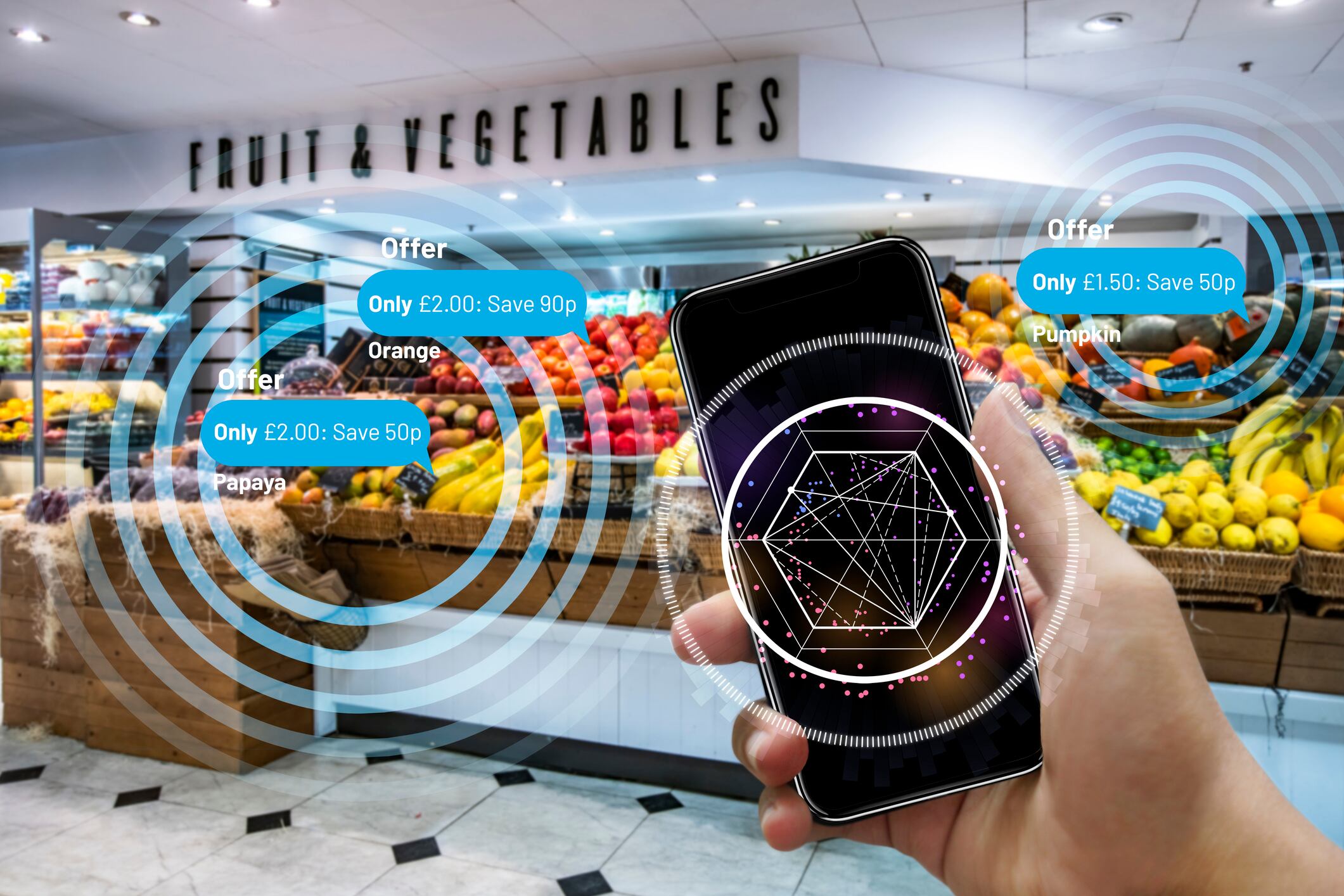The days of enticing consumers to add a packaged food or beverage to their grocery cart at the shelf through captivating callouts, appetizing images or even promotional sales may be waning as more shoppers lean on AI to stock their pantries.
According to a poll of more than 2,000 consumers conducted by PwC and published earlier this fall, a whopping 40% of consumers expect to use AI to compare products by 2030 and one-third will hand over purchasing decisions entirely.
The market research firm characterizes this shift as “a full-scale upheaval in how people discover, choose and buy household essentials,” and it will require brands and retailers to adopt a new marketing playbook to remain relevant and drive velocities, as PwC’s CPG Leader Carla DeSantis explains in this episode of FoodNavigator-USA’s Soup-to-Nuts Podcast. She breaks down how AI is spurring shoppers to shift their purchasing habits, including how and why they use AI along the path to purchase. She also shares how AI stacks up to more traditional influencers, like friends and family, targeted ads and in-store demos. Finally, she shares strategies for how CPG brands and retailers can adapt to this fast evolving landscape.
How are consumers using AI to shop and why?
As recently as pre-pandemic, most grocery shopping occurred in brick and mortar stores where consumers strolled the aisles and perused the shelves for favorite items on their list as well as new products they might want to try.
In this setting, PwC notes in a recently published report that “CPG companies thrived on a simple premise – control the shelf.” It explains that through strategic placement, merchandising campaigns and promotions to boost velocities, CPG companies could turn browsing into buying.
But, it adds, “in a world where more decisions are made before a shopper ever sets foot in a store, if they go at all, that model is eroding.”
According to PwC’s survey, 48% of all consumers now order groceries and other household essentials online, while 40% use AI to find and compare products and about a third use AI to make purchases, set up subscriptions or automate orders through smart home devices.
For Millennials, this is about 10-15 percentage points higher. So, for example, 54% of Millennials use AI to find and compare products versus 40% of all consumers.
DeSantis described this generational difference as “huge,” and an important data point for marketers to understand.
She hypothesized that Millennials may be embracing AI more quickly than other generations because of their current life stage and the complexity of raising children and caring of aging parents.
Marketers can tease out what Millennials are looking for by examining where they are most likely to get their information, which DeSantis said is mainly from online reviews as well as friends and family. These factors are also important to Gen Z, but the younger generation also responds well to social media influencers. Gen X, on the other hand, is more likely to favor free samples to online reviews or targeted ads. Baby boomers share this preference for samples and recommendations from friends and families.
DeSantis notes that different levels of trust that different generations place in reviews, recommendations, targeted ads and social media influencers all underscore how they will use AI to streamline shopping.
While many consumers are eager to hand off at least part of the burden of shopping to AI, DeSantis explains most also want clear guardrails to protect against accidentally overspending or unintentionally buying the wrong items.
How is consumer adoption of AI altering marketing strategies?
Consumers offloading some aspects of shopping onto AI is not as bad for brands and retailers as it might sound on first blush, according to DeSantis. Rather, she argues, the adoption of digital shopping supported by AI means marketers now have significantly more information at their fingertips to better target consumers.
Before AI, marketers relied on post transactional information to understand what, where and why shoppers bought products. Now, however, they can use AI to understand what information a shopper engages with before they make a purchase – for example, what websites are they scrolling, recipes are they reading and when do they pause on ads versus breeze by them.
With this influx of new consumer data comes tremendous opportunities to better connect with shoppers, but only if the data and corresponding insights are attributed accurately to the appropriate consumer, as DeSantis explains.
She argues that people are just as important in interpreting AI gathered data to understand how the information connects, where it should be attributed and what insights to glean from it.
With this in mind, more companies are thinking through how people and AI can collaborate – rather than how employees can use AI as a tool, according to PwC research.
As such, DeSantis added, AI is emerging as a top investment for CPG companies – with most investments falling into two buckets: enhancing how they go to market – so supply chains, for example – and connecting with consumers.
She notes that currently many companies address these components in silos but they should be considered together for the most positive impact.
“Putting these two guys together is going to be the next gen because the truth of the matter is” consumers shop across channels and CPG brands and retailers need to adjust accordingly so that they deliver the marketing message and the product to the consumer wherever they are, DeSantis said.
Next steps: How to maximize the impact of AI and remain relevant
To tackle this next phase, and make the most of AI to boost consumer engagement through personalized marketing and new paths to purchase, DeSantis encourages companies to first reframe their focus from products to systems. Rather than thinking about specific stores or SKUs or channels, think about how the brand or products fit into consumers’ needs, preferences and routines. Identify where automation or predictive AI could ease friction with added intelligence.
The second step is to reinforce consumer trust in AI by transparently setting the guardrails they are looking for so they feel empowered to use AI as a shopping assistant.
Third, rethink the brand’s portfolio and go to market strategy – is the main goal to sell a product or help consumers achieve an outcome? The latter is the direction of travel from most shoppers’ perspectives.
Finally, DeSantis advises companies start playing with AI if they haven’t already. Even if just as a small pilot program. She cautions the technology is evolving too fast for companies to sit on the sideline and expect to remain relevant in the next five years.




